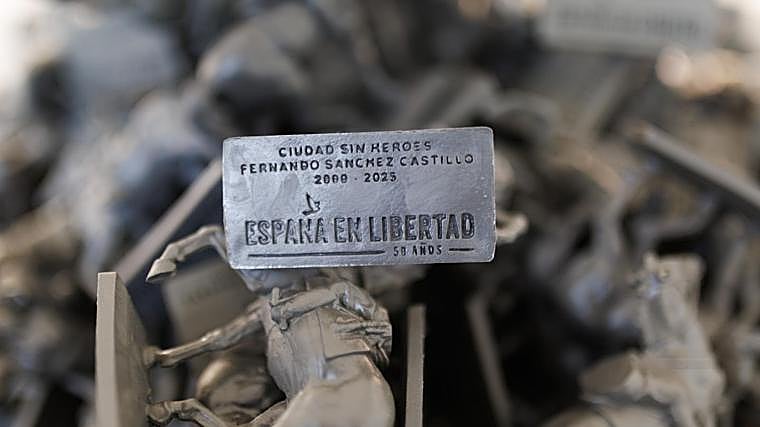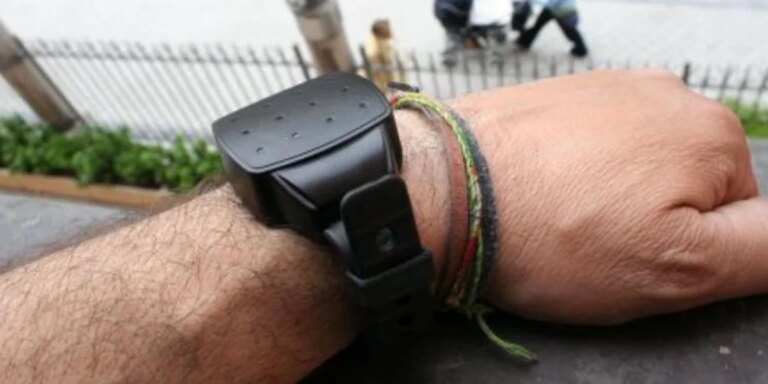
As soon as Fernando Sánchez Castillo (Madrid, 1970) entered the Madrid studio he shares with his partner, the artist Cristina Lucas, he was met with piles of stacked and packed boxes arriving from Mexico this Saturday. “This is it, there’s only one left open.” … comment. It contains 25,000 small-scale replicas made by their creators of Franco’s equestrian statues that until recently adorned the streets of Madrid, Santander and Valencia.
Their final destination is Madrid’s Bellas Artes Art Institute, where they will be exhibited this weekend as part of the “Spain of Freedom: 50 Years” initiative. Sanchez Castillo separated the former rider by one. “The idea was to make this sculpture, which is closed to the public because of the Historical Memory Act, available to the public for free, because horses are important to me, and their presence in the urban landscape will always be important.” There will never be a horse without Dominator. because? Because horses represent people, they always show up with someone to ride and command them. What’s interesting to me as a sculptor is liberating horses, which is the same as liberating people. “This is a metaphor for a town that, 50 years later, has taken back the reins of its destiny,” explains the author.
The installation, named “Free” by the artist, commemorates half a century since Franco’s death on November 20, 1975 opened up the possibility of greater freedom in Spain. The artist also ensures that this work celebrates the collective achievements of our democracy and promotes reflection on fundamental rights. “In reality, Goya did not choose to paint about the horrors of the war of independence against France, but now it was his turn. The same thing happened with the work I did in relation to historical memory. At the moment, the question of the iconography of the past is so important that we think about what to do with it in order to survive that past and aim for a more free future,” he justifies.
His reproduction was inspired by Franco’s equestrian sculptures created by Jose Capuz and removed from Nuevos Ministerios in 2005. By presenting a horse without a dictator as its rider, he hopes to free the horse from the person who controlled it. Sánchez-Castillo believes that this seemingly simple gesture contains a powerful metaphor for how power comes down from its pedestal and only the horse continues to move as an expression of democratic impulses and common life.
25,000 figures
This weekend, each visitor can pick up one of 25,000 small figurines in exchange for leaving a written message about freedom, democracy and fundamental rights. The installation will be open to the public on Saturday from 10am to 9pm in the Column Room of Círculo de Bellas Artes. and Sunday from 4 p.m. until 9 p.m. “This work is certainly a reflection on power and freedom, which are our main concerns right now. I believe that as a people, we must fight every day to gain greater freedom, while always respecting the freedom of others.” It’s not a question of being happy or not, it’s a question of being busy with this work and working every day for that freedom. I do it from the standpoint of an artist, thinking in a flexible way and proposing actions that are helpful to other people,” he claims.
“Democracy is not a closed heritage, but a common project that we all renew through action, voice and participation,” Sánchez-Castillo argues. Sánchez Castillo has long been known for reinterpreting symbols of Spain’s modern and contemporary history with a generally critical perspective, and has exhibited his work in prestigious museums such as the Center Pompidou in Paris, the Tate Modern in London, and the Reina Sofía.

For example, in 2012 he organized the exhibition “Guernica Syndrome” in Matadero Madrid, turning the wreckage of Franco’s cruise ship Azor into an anti-monument. Three years later, he exhibited “Free Time” at the Juana de Aizpul Gallery, about the moments of freedom we find even in violent environments. He showed photos of UN soldiers pretending to be dead when the war ended. “It was a memento of his own death. And that, for me, was a moment of creative freedom where art triumphed over death,” he explained to ABC in 2015.
slaughterhouse
He recently developed another project that reveals how Madrid’s Matadero was used as a concentration camp after the war, where 838 beggars were left to starve and die in the cold in just one year. “The images from Francisco Fernández Agudo’s archives are so hard that it traumatized me. They look like they came from Auschwitz. And I animated the portraits of the prisoners in 3D and they I thought of an artistic installation (not yet unveiled) that would move, speak to us, and convey vitality. In short, recognize those places as an example of something that should never happen again,” he explained to this newspaper in June.
In fact, it’s like stepping back in time as you enter his studio and immediately come across several busts of Franco, a replica of Charles Chaplin’s face from The Great Dictator, an old suitcase filled with documents about Madrid Matadero’s dark past as a center of repression, and several shelves full of history books. “Be careful, there’s a rat we found inside the Franco statue,” he warns. He puts it in a box with rocks, water and food as if it were a new pet in the house. “I named him Francis because I didn’t know if he was male or female,” he jokingly commented.



